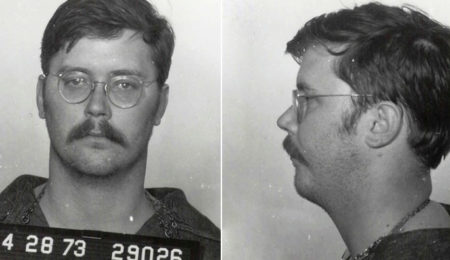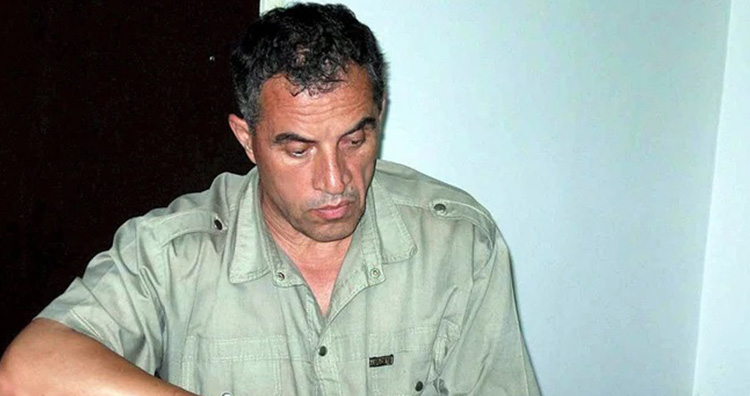10 Brutal Criminals Who Hid in Plain Sight

It’s no secret that brutal criminals exist. However, it can be strange to think that despite being ruthless in their crimes, many of them were able to escape detection. In fact, from appearing on television shows to reporting on their own crimes, there are criminals who managed to hide in plain sight for quite a long time. Now, if that has caught your fancy, here are ten such brutal criminals who hid in plain sight. Â
1 Rodney Alcala, the Dating Game Killer
In 1978, the serial killer Rodney Alcala appeared on the show The Dating Game and won. Two years later, he was sentenced to death for the murder of Robin Samsoe and also suspected of killing others. Unknown to the show’s producers, Alcala had held a criminal charge of attempted murder at the time of his television appearance.Â
In 1978, The Dating Game host, Jim Lange, made history by introducing a man named Rodney Alcala as “Bachelor Number One.” This man then won the episode, but the bachelorette refused to go out with him, citing that he made her uncomfortable. Little did they know that Alcala was actually a serial killer who, at the time, held an attempted murder charge and had already murdered at least five women.
Alcala’s killing spree began in the 1960s and ended with his capture in the 1970s. He was then sentenced to death for the murder of a 12-year-old Robin Samsoe and four other women. Alcala later appealed his sentencing twice, with each appeal returning a verdict of guilty. Sadly, despite these convictions, investigators believe that Alcala might have had more victims than we know. In 2021, Alcala, also known as ”The Dating Game Killer,’ passed away at the age of 77. (1, 2)
2 Juan David Ortiz
Juan David Ortiz is a former US Border Patrol Agent who worked as an intelligence supervisor in Laredo, Texas. In 2018, he was assigned to assist the Texas Rangers in the murder investigation of four women. A few weeks later, when an escaped victim identified him, the Rangers discovered that Ortiz was the killer they had been looking for.

In 2018, a US Border Patrol agent was arrested on the suspicion that he may be a serial killer. The agent, Juan David Ortiz, was thought to have murdered four women over two weeks in a Texan border town called Laredo. At the time, he had been assigned by the Border Patrol to aid in the investigation of his own crimes.
Just two weeks before Ortiz’s arrest, investigators had found the body of a woman with gunshot wounds to the head and wrist. When a second victim was found with similar wounds, it raised suspicions of a serial killer on the loose. The Texas Rangers then approached the Border Patrol for assistance and Ortiz, being an intelligence supervisor, was chosen for the job.
Fortunately, Ortiz’s third would-be victim managed to escape and later identified him as her attacker. By then, however, Ortiz had committed two more murders, bringing his total number of victims to four. (1, 2)
3 Vlado Taneski
In 2008, a Macedonian journalist named Vlado Taneski was arrested for the murder of two elderly women. Prior to his arrest, he had been actively reporting on his own crimes. He was caught after he wrote articles that had information yet to be released and only the killer would have known.Â

Vlado Taneski was a Macedonian journalist who gained notoriety for reporting on a series of killings targeting elderly women in his hometown. The reports soon caught the eye of thousands of readers, who found his inside knowledge of the crimes riveting. However, in 2008, the local police officers became suspicious of Taneski because he seemed to know details that had not yet been released to the public.Â
According to the investigators, Taneski knew the exact type of telephone cord used to strangle and tie up the women, something that only the killer could have known. His DNA had also been found at two of the crime scenes, strengthening their suspicion. As a result, he was arrested and charged with the murders of the two elderly women. A few hours after his arrest, however, Taneski drowned himself in a bucket of water, leaving behind just a note that said “I did not commit these murders.â€
(1, 2)
4 Craig Peyer, the Knott Killer
In late 1986, a student named Cara Knott was found murdered near an abandoned bridge in San Diego, California. As a result, a local news channel interviewed a highway patrol officer on women’s safety in the city. That officer, named Craig Peyer, was actually the killer and during the interview, he was still sporting scratch marks on his face from the attack.Â

On 27 December 1986, when a college student named Cara Knott failed to show up at her home, her family reported her missing. Her body was soon found strangled and dumped off an abandoned bridge in San Diego, California. The brutality of the murder quickly caught the attention of the media, and a TV reporter asked to interview a California Highway Patrol officer on how women could protect themselves at night.Â
Incidentally, that patrol officer, named Craig Peyer, was Ms. Knott’s murderer. The interview then went on to immortalize a key piece of evidence in the case – scratch marks on Peyer’s face that he had sustained while attacking Ms. Knott. His appearance on the news network also prompted other women to come forward with their own reports of his misconduct. As a result, in a matter of weeks, investigators zeroed in on Peyer and he was eventually convicted for the murder. (1, 2)Â
5 Stephen McDanielÂ
On 30 June 2011, a live TV reporter interviewed Stephen McDaniel after his neighbor, Lauren Giddings, had been murdered. During the interview, McDaniel was visibly shocked to learn that the police had found a section of Giddings’ body in a nearby dumpster. Soon after, it was discovered that McDaniel had broken into her apartment and murdered her before discarding her dismembered body in that dumpster.Â

On the evening of 25 June 2011, 27-year-old Lauren Giddings was reported missing by her friends. Five days later, a local news channel interviewed one of her peers and neighbors, Stephen McDaniel, regarding her disappearance. Throughout the interview, McDaniel appeared concerned and distraught while establishing that no one had seen her since her reported disappearance. However, when the reporter eventually revealed that the police had discovered Giddings’ body from a dumpster nearby, McDaniel was visibly shaken.
In reality, McDaniel was responsible for her disappearance. He had broken into Giddings’ apartment and murdered her in the early hours of 26 June. He then dismembered her body and dumped it at various locations, with the torso ending up in the dumpster near their apartment. Had the police cars not blocked this dumpster from being emptied, it is likely that there may have been no indication of her actual fate. (1, 2)
























